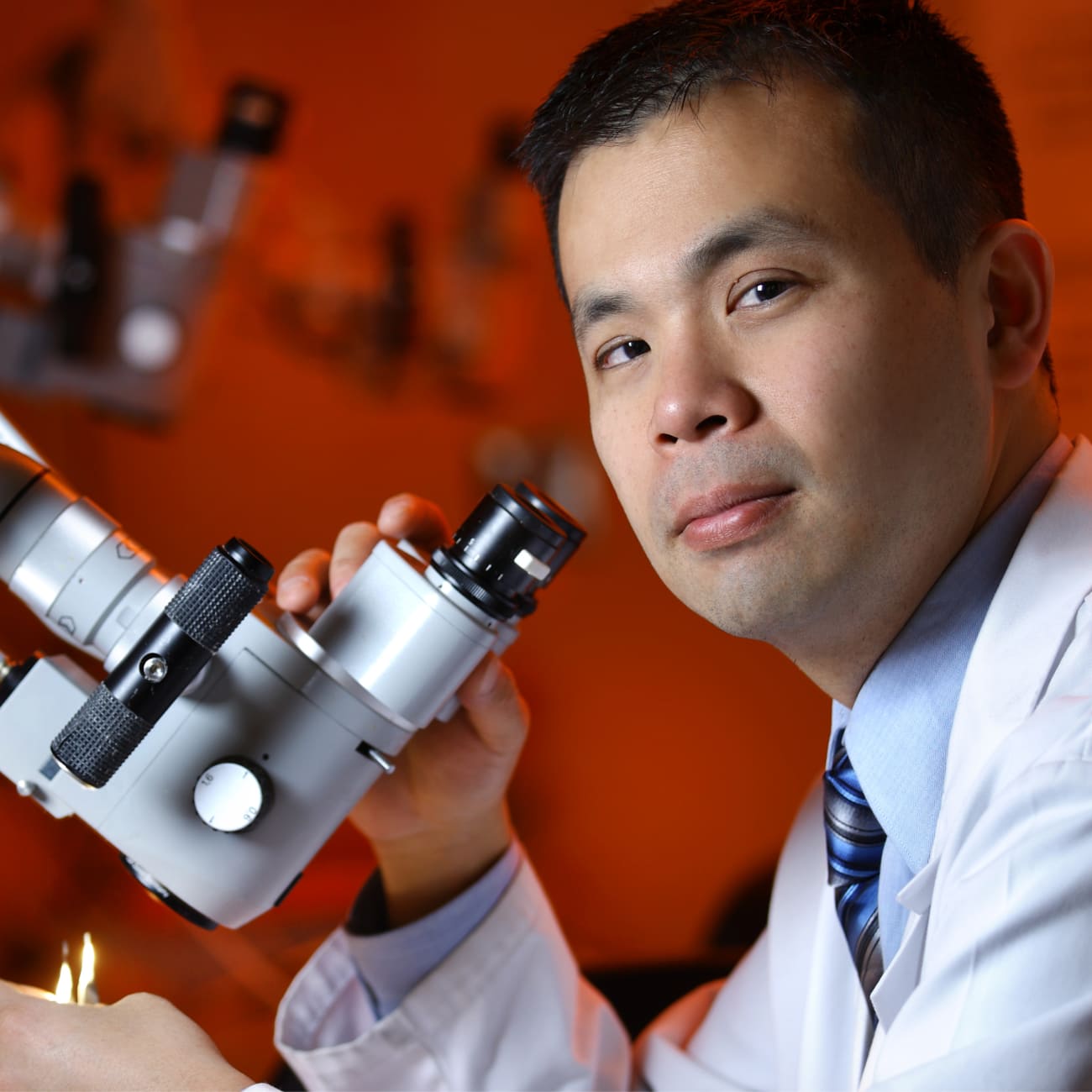
Gene therapy in mouse model of Usher syndrome partially restored hearing.
HeadWay Winter 2018
Usher syndrome—the rare genetic disorder that’s the world’s leading cause of deafness-blindness—occurs in three different forms. In the most severe one, children are born deaf with vestibular problems and develop vision problems early in life. There’s no cure, and no good treatments beyond cochlear implants, an imperfect solution compared to restoring native hearing.
However, research in an animal model, led by Johns Hopkins neuro-otologist Wade Chien, could be the starting point for the first treatment for this condition that helps restore natural hearing for this and other genetic forms of deafness as well.
Chien and his team worked with mice that had a recessive mutation in the whirlin gene, a known cause of some cases of Usher syndrome. This mutation renders the hair-like extensions on inner ear sensory cells (hair cells) short and dysfunctional. Thus, these animals are deaf and tend to spin in circles rather than walk in a straight line.
In a recent study, Chien and his colleagues injected a viral vector carrying normal whirlin cDNA into the inner ears of these whirlin mutant mice. Within weeks, mice that received whirlin gene therapy were able to walk in straight lines and produced robust auditory brainstem responses to sounds as low as 60-70 decibels—about the volume of a normal human conversation. This response lasted at least four months in most of these animals.
Although wild-type mice with no whirlin mutation can typically hear sounds as low as 30 decibels, being able to partially restore hearing in this mouse model is a tremendous advance, Chien says. The finding shows that gene therapy has potential for treating Usher syndrome and potentially other forms of hearing loss caused by genetic mutations as well.
Applying gene therapy to these conditions still faces some significant hurdles before it can be available to human patients, Chien explains. Researchers will need to show that this therapy is safe and effective for humans, and they’ll need to better understand how early it needs to be applied to be effective. Ideally, he says, tweaks in the protocol will help improve hearing even in adults.
“The last major breakthrough that we had for hearing loss was the cochlear implant, which was developed in the 1960s, so we’ve gone through half a century now without any major innovation in therapies,” Chien says. “This is something that we think has a lot of promise for Usher and other genetic hearing disorders.”
To refer a patient, call 443-997-6467


